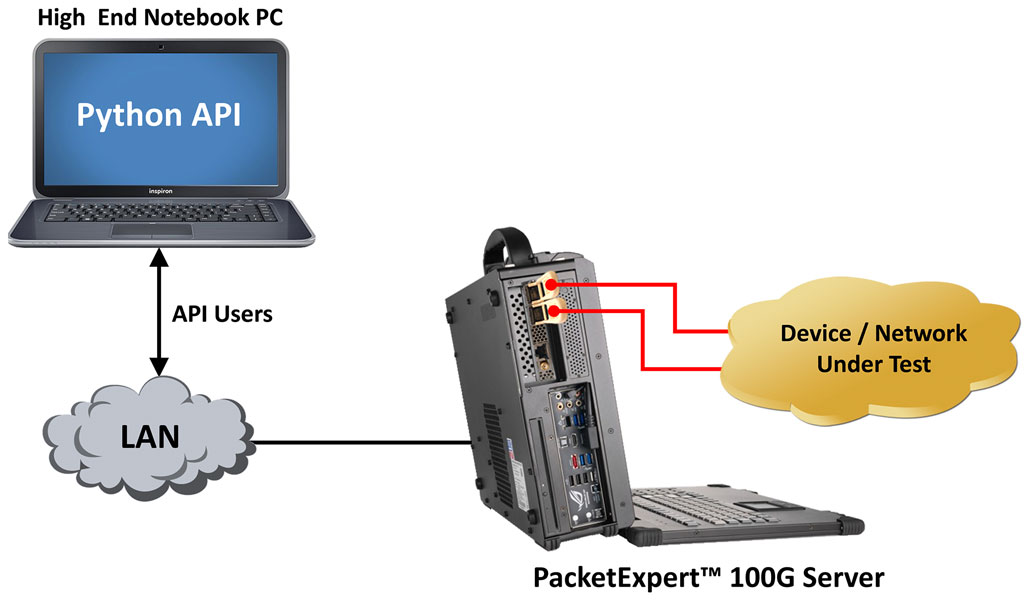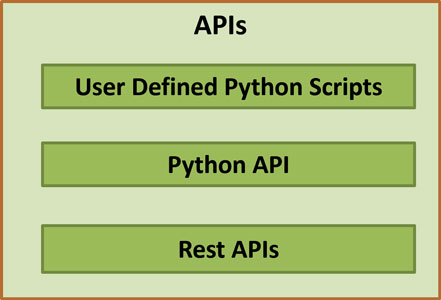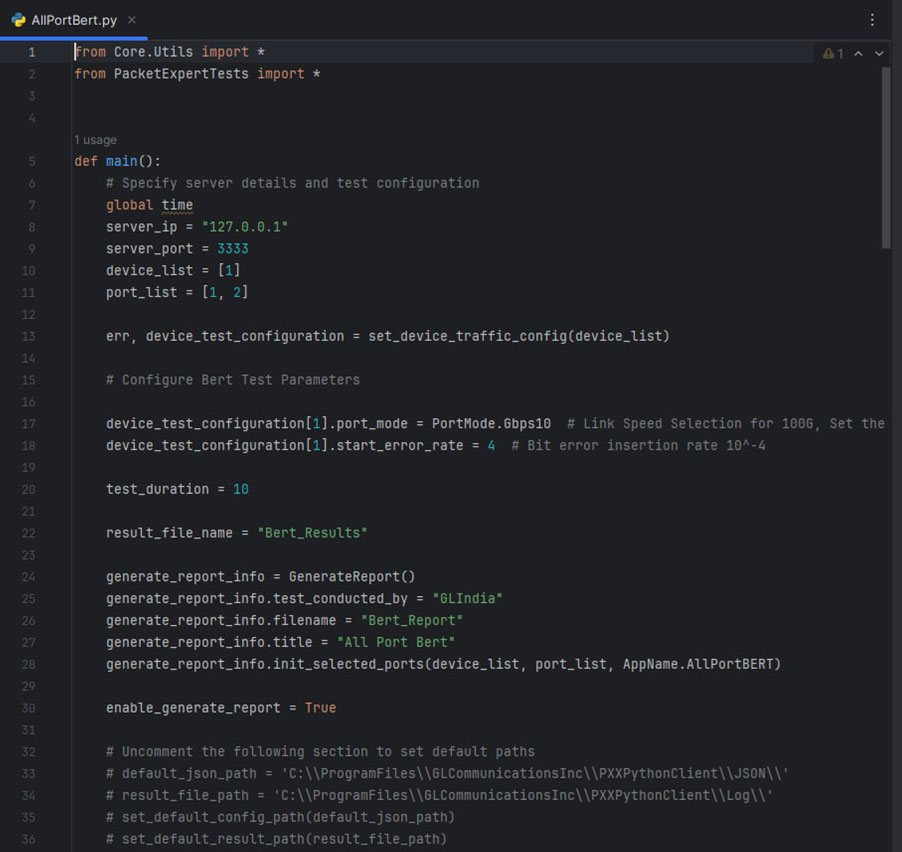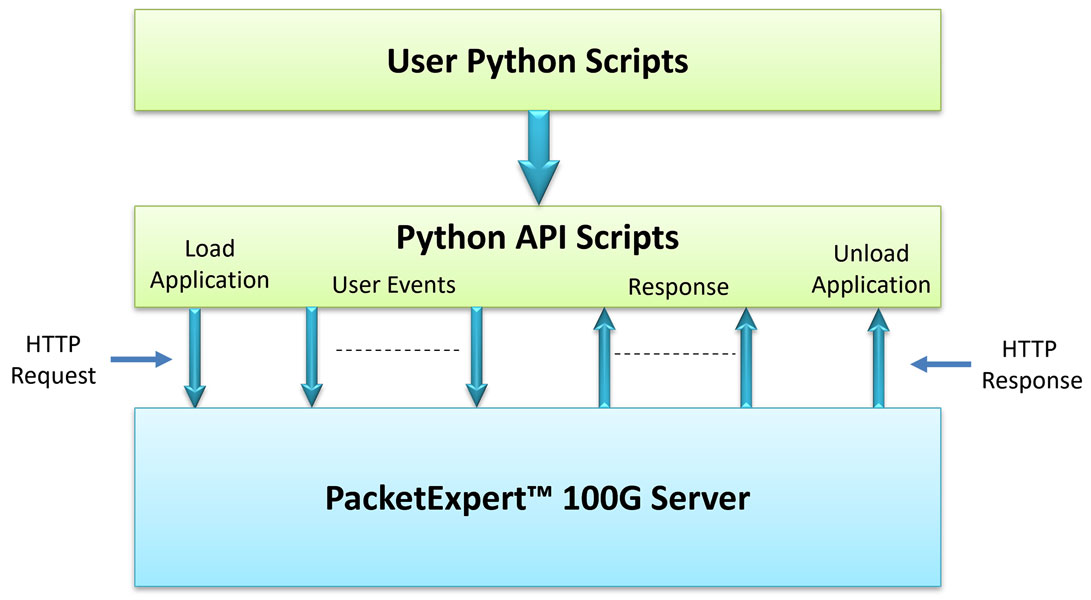PacketExpert™ 100G Python APIs for Efficient Test Automation and Regression
Automate testing and regression seamlessly using PacketExpert™ 100G Python APIs, designed for modern workflows.
Request a Demo / Quote BrochureOverview
With additional licensing, PacketExpert™ 100G supports Python APIs to access all applications such as Bit Error Rate Testing, RFC 2544, ExpertSAM™ (ITU-T Y.1564 testing), and Multi Stream Traffic Generation using Python APIs. The PXX109 license is required to enable Python API support.
PacketExpert™ 100G can be configured as server-side application using the PacketExpert™ 100G Server architecture, to provide the capability of remote operation, automation, and multi-site connectivity, using Python client-side scripting tools. On the client side, the packaged library file is provided which allows the client interface to communicate with the PacketExpert™ 100G Server to perform PacketExpert™100G specific functionalities.
The client scripting library facilitates communication with the PacketExpert™ 100G Server through HTTP1 based REST APIs from the client environment. The PacketExpert™ 100G Server is designed specifically to control the PacketExpert™ 100G hardware. This setup allows users to manage PacketExpert™ 100G by sending commands and receiving responses using Python scripting, a language familiar to many users.
- Remote operation, automation, and multi-site connectivity using Python APIs
- Scripts for traffic generation at Ethernet, VLAN, MPLS, IP and UDP layers up to 100 Gbps
- Multiple PacketExpert™ 100G can be controlled remotely from single client application via PacketExpert™ 100G server
- Sample scripts are provided for Bit Error Rate Testing, Loopback mode, RFC 2544, ExpertSAM™ and Multi Stream Traffic Generator and Analyzer applications
PacketExpert™ 100G Server
The PacketExpert™ 100G is a web-accessible appliance, controlled via the standard browser. It features one or more hardware boards integrated with a high-end Windows® PC. Each board, referred to as a Device in the PacketExpert™ 100G GUI, includes two 100G/40G/25G/10G/1G ports. Multiple devices can be installed in a single appliance, increasing the total port capacity per system.
The integrated PC runs a PacketExpert 100G Server software that controls the hardware devices and handles functionality. Browser clients communicate with the Server via REST APIs, using HTTP GET/POST requests with JSON data. The Rest Server listens to these requests, interacts with the hardware, and sends responses back to the clients.
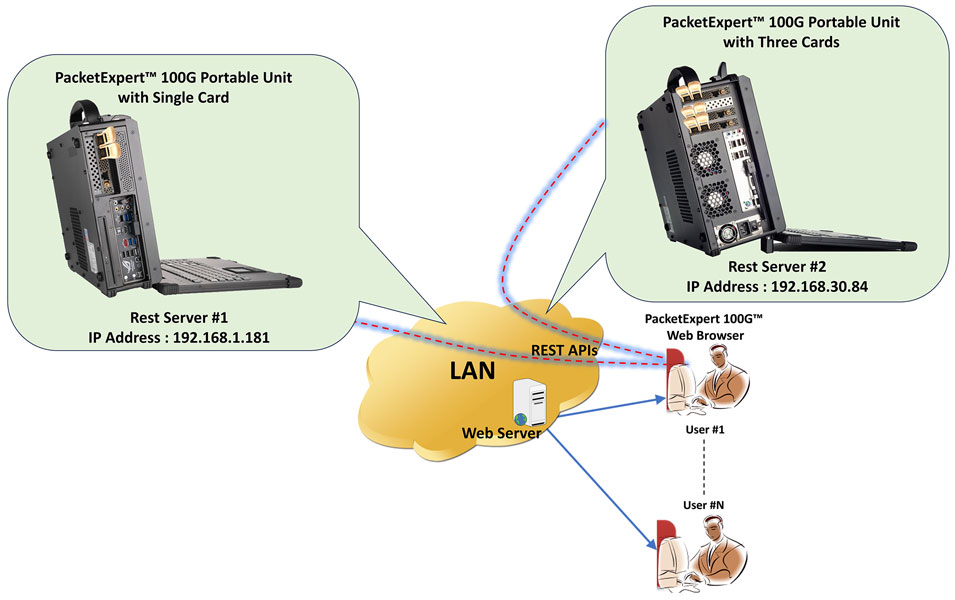
PacketExpert™ 100G Server
Python Client and Scripting
The Python interface for PacketExpert™ 100G allows users to control all its features through Python APIs, which are based on a client-server architecture. The 100G server communicates directly with the PacketExpert™ 100G hardware, while users interact through high-level Python API scripts. These scripts internally leverage HTTP1 REST APIs to connect with the 100G server, enabling seamless access to the complete functionality of the PacketExpert™ system.
Working Principle
The architecture ensures a seamless interaction between the user environment and the hardware, enabling remote control, automation, and efficient execution of PacketExpert™ 100G functionalities through Python.
The PacketExpert™ 100G Python API provides a robust and flexible solution for automating network testing and analysis. Built on a client-server architecture, it enables seamless control of PacketExpert™ 100G hardware through Python scripting. Users can leverage high-level APIs to access features like Bit Error Rate Testing, Loopback, RFC 2544, ExpertSAM™ (Y.1564 Testing), and Multi-Stream Traffic Generation and Analysis. With its intuitive design, the API simplifies remote operation, multi-site connectivity, and test automation, making it an ideal choice for professionals seeking efficiency and precision in network testing.
Resources
** Standard MM/SM kit includes, SFPs for all rates, with Pelican case for Lunchbox; including PXX100, PXX101, PXX105, and PXX109; Electrical /SM SFPs and Loopback Plugs extra; Includes 3-year hardware/software support warranty.
Note: PCs which include GL hardware/software require Intel or AMD processors for compliance.
| Item | Product Description |
|---|---|
| PXX109 | Automation using Scripting with client-server APIs - Optional license |
| PXX106 | PacketExpert™ 100G – One card / 2 Port Platform with MM Kit ** |
| PXX108 | PacketExpert™ 100G – One card / 2 Port Platform with SM Kit ** |
| PXX107 | PacketExpert™ 100G - Two Card / 4 Port Platform with MM Kit ** |
| PXX110 | PacketExpert™ 100G - Two Card / 4 Port Platform with SM Kit ** |
| PXX10X | PacketExpert™ 100G – 4 Card Platform / 8 Port Platform |
| Webinar |
|---|

|
